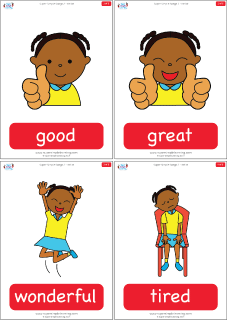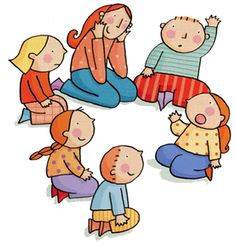We’ve all been there: you have such an amazing lesson that you’ve worked on during your entire weekend, you get to class on Monday morning ready to make your students have so much fun that they forget they’re learning, and then one student decides to act up and throws the class behavior out of whack. Ok, for some of us, this sounds like everyday in the classroom!
Young learners are particularly vulnerable to bad behaviors because they are still “learning the rules” of the learning environment. Not only are you teaching them English, but you are also teaching them how to behave in a classroom setting.
There are several types of negative behaviors that young learners often exhibit. One of them is not paying attention to the teacher or listening to his or her instructions. This is often the most difficult one for the teacher, because we feel it is a personal affront to our authority. Perhaps another student prefers to play with and/or distract his or her neighbor instead of looking at the teacher. Yet others will cry non-stop in the classroom, because they miss mommy and daddy, because they didn’t win at an activity, because they are still adjusting to school, because they don’t feel well, because… you get the picture.
The first and most important technique for dealing with negative behavior is to not let it affect you personally. Try not to let these behaviors raise your blood pressure, produce anxiety, or make you angry. (Yes, we all realize that this is easier said than done.) Try to remain cool and calm.

Copyright Keepcalmandposters.com
One of my personal zen moments always happens when I go to a shopping center here in Madrid. Seeing children running, playing, acting insane despite their parents’ desperate please… it all makes me realize that kids are kids, and their favorite “This is boring” statement is not a personal affront to my (ahem, awesome) lesson plan.
Now that we’re all cool as a cucumber, how can we discourage negative classroom behavior? One trick to try is to refrain from punishing negative behaviors, and rather reward positive behaviors.
Here’s how you can reward positive behaviors with young learners.
For very young learners (1-3 years old), you reward by allowing them to participate in really fun activities! Keep their interest in what you are doing and make them participate vocally in order to join in the activity. For example, if you are teaching your students how to wait in the classroom, try using maracas. Make each student ask for a maraca (“A maraca, please” or “Yes, please”) before they can join in on the shaking fun! Then yell STOP! and place your maraca in front of you. Wait for everyone to do the same. Once they all have the maracas in front of them, count 1 – 2 – 3 – 4 – 5 and then pick up your maraca and shake to your heart’s content! Repeat the stop and counting several times. This will teach them in a fun way that they should wait their turn, wait for the teacher, and stop and pay attention when the teacher gives the keyword stop. Give a reward to the ones who demonstrate good behavior consistently (a sticker for the first student to stop, etc.).
For students ages 3-5, you can start working on reward systems in order to encourage good behaviors and discourage bad behaviors. One great way to do this is to reward on the spot for good behaviors. Little Marcos is sitting properly in his chair? Say “An applause for Marcos! You’re sitting properly!” and wait five seconds until everyone else catches on and sits properly. Other great ways to reward this age group is with a favorite song (“Wow, you’re all sitting properly! Good job! I’m very happy! Let’s sing…”) or short game. If you have one student who is really messing things up, leave them out of the activity (“Sorry Sergio, but you have to sit properly if you want to play the game.”) The idea is to show them that good behaviors lead to fun!
For students 5-8, one of my favorite good behavior techniques is the No Monkey Business! Poster.

Copyright lessonplansesl.wordpress.com
At the end of every class, students get to put a sticker on the monkey if they have had good behavior collectively! I laminate copies of this poster for each class. When they get a certain number of stickers (10, 20, whatever you decide) then the class gets a prize! This can be a physical prize – like a new pencil, a rubber, or a piece of candy, if it’s allowed – or a chance to play a special game that they love! You can always use “the Monkey” to quell negative behavior as soon as it pops up (“If you continue, there will be no sticker for the Monkey”).
I laminate the poster because, if the behavior is truly hideous, I will take a sticker away and make a big deal out of it.
By trying to encourage positive behaviors with rewards and fun activities, you automatically discourage negative behaviors without punishment. Although avoiding punishment forever is unrealistic in a learning environment, if you try to encourage good behavior first, you will find that you are punishing much less!
What is your favorite positive behavior reinforcement technique? Leave us a comment!






















